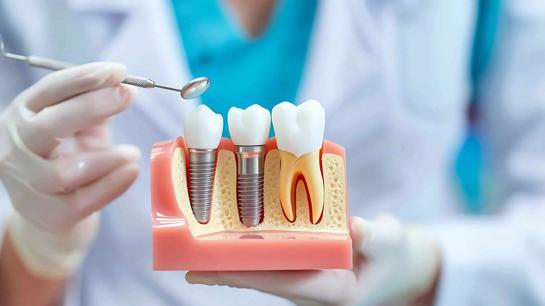Root Canal Treatment Abroad
Considering root canal treatment abroad? This relatable guide explains what to expect, from key steps and recovery to real pros, cons, and costs of dental tourism—helping you make a confident, informed choice for your dental health.
Let’s face it, nobody dreams of sitting in a dentist’s chair, especially when the words “root canal” come up. But here’s the reality—sometimes a root canal isn’t just the best option, it’s the move that lets you hold onto your own smile, long after the ache is gone. If you’ve been staring at quotes from home dentists and feeling your wallet wince, it’s no wonder dental tourism has caught your attention. It’s a big step, blending travel and treatment, and it can feel confusing, even risky, if you’ve never tried it before. So let’s talk through it—all the questions, bumps, and bright spots—just like I’d do for a friend weighing the same choice.
Why Root Canals Happen: Not Every Toothache Means Trouble
You feel it—that stab when you sip something cold, or the soreness that doesn’t quit. Thing is, a root canal isn’t a punishment, it’s a rescue mission for a tooth that’s in too deep with infection or damage. Most people land here after:
- Deep, stubborn decay that no filling can fix.
- Lots of work on the same tooth over the years.
- An unlucky chip from a crunchy snack or a bad fall.
- A hidden abscess your dentist spots on an X-ray.
Some patients barely notice a thing until their dentist spells out the problem. Others know something’s wrong—the pain can be sharp, or the tooth might darken or swell. The bottom line? Letting it go can lead to bigger, bone-deep problems.
How a Root Canal Really Feels—Start to Finish
Here’s what folks rarely say out loud: root canals have a scary reputation, but the actual process is, well, underwhelming. Most people compare it to a longer cavity appointment. The local anesthetic does its thing, the dentist goes in through the top, and uses microscopic tools to clear out the bad stuff inside. Once it’s clean, the root’s filled, sealed, and—if you’re smart—a crown is fitted to keep that tooth strong for the long haul.
In busy dental tourism hubs—like Budapest, Istanbul, or Bogotá—it’s not unusual for clinics to bundle everything into a few short visits, sometimes even wrapping up in one thorough afternoon. Comfort, technology, and pain management have come a long way. Still, nobody’s pretending it feels like a spa day. Expect a little soreness, sure, but serious pain is rare.
The Realities of Dental Tourism: Why People Go, What Can Go Wrong
You know why people look at root canal treatment abroad—savings can be huge. It’s not wild to see $250–$800 total for a root canal and crown somewhere like Hungary or Turkey, instead of $1,500 or more at home. Add in flexible scheduling and a few days in a new city, and it sounds like a win.
But here’s what matters: It’s not always smooth sailing. Some travelers get rushed through lots of procedures (“13 root canals in a single day”—this actually happened), only to come home with pain, trouble chewing, or bigger bills for repairs later. Others face language gaps, clinics focused on numbers not nurture, or a tough time finding a local dentist willing to take over complicated aftercare.
It’s not all cautionary tales. There are plenty of travelers who come back grinning, relieved at both the results and the price. But if you go in eyes wide open, you’ll make better choices and worry less about a surprise.
Root Canal vs Extraction Abroad: When Is Pulling the Tooth a Better Bet?
Nobody likes to lose a tooth, but sometimes it’s the smarter call. If a tooth is too fractured, has cracks running deep below the gum, or you’ve fought off infection one too many times, even the best root canal won’t save it. Dental clinics abroad offer both options, but here’s a thought: pulling a tooth might be cheaper up front, but replacing it with an implant or bridge can quickly flip the bill.
If you do go with a root canal, remember—capping it off with a well-made crown is what keeps you chewing confidently for years.
Healing, Recovery, and What’s Really Different Abroad
Here’s what surprises a lot of folks: with good care, a root canal-treated tooth can last a decade or longer, sometimes for life. Most international patients leave pain-free, but some soreness is pretty normal for a couple days (soft foods help). The real difference abroad is pace: one or two jam-packed visits, not slow spacing over weeks.
Plan on staying 5–8 days if you’ll get a crown fit, since labs need a little time. If you’re thinking about flying home right after surgery, most dentists recommend waiting at least a day or two, just to let any swelling die down. And yeah, take it easy with crunchy foods at first—your jaw will thank you.
True Stories: When Dental Tourism Goes Right (and Wrong)
Let’s get honest. People share everything—from nightmare headlines to happy endings. There are stories of folks who bundled too much work into way too little time, and wound up with chronic pain or expensive repairs. There are others who look back and wish they had asked more questions at the clinic.
And then there’s the bright side—travelers who land in cities known for high standards, do their homework, and tell stories of pain-free, affordable care. The folks who come back with smiles (literally) usually spent extra effort vetting both clinic and dentist, not just “the best-looking website”.
Your Must-Ask Checklist Before Booking
- Who’s actually doing my root canal? What’s their training and experience?
- What materials will they use for my filling and crown?
- How many visits? How much time should I plan in-country?
- If things go sideways after I leave, who helps—will my local dentist take over?
- Are there lab techs on site, or do they outsource my crown work?
- Can I get all my records and x-rays in English for future care?
- What’s their policy if I need a recall or a quick touch-up?
- Does the dentist rush, or do they build in time for questions and healing?
FAQ: Root Canal Dental Tourism, Straight Questions
- Will it hurt more abroad?
- Not if the doctor uses proper numbing. You might feel a pinch or two—nothing more dramatic than at home.
- How long should I expect to stay?
- If you need a crown, plan for a week, sometimes less. Rapid clinics do it in a day or two, but slow and steady often wins this race.
- What should I really expect to pay?
- Honest answer: Most travelers save 40–70% all-in, but flights, hotel, and time off add to the total.
- What’s the real risk?
- Rushed care, language gaps, cheap materials. Or simply getting less aftercare than back home—be clear with your own priorities.
- Will my insurance cover it?
- Almost never, unless it’s a travel or emergency plan. Check first.
- Who fixes things if it goes wrong after I’m home?
- It can be tricky. Not all local dentists are happy to pick up “foreign” complications. Have a backup plan.
- Does recovery feel any different than at home?
- Not really. Human mouths heal the same everywhere. Jet lag and travel stress are the bigger variables!
The Wrap-Up: What to Remember
Dental tourism isn’t a magic wand—it’s a trade-off: real savings, maybe even a mini-vacation, but only if you walk in as an informed, assertive patient. Choosing root canal treatment abroad means weighing the numbers against real trust—the clinic’s skill, time for care, and your own peace of mind on the flight home. Do your homework, ask direct questions, plan for the unexpected, and you just might come back smiling wider than before.
Still undecided? That’s normal. Everyone feels a bit of hesitation before making a big health choice. If you want a natural, bright result and value for every dollar (or euro, or pound), focus on finding a dentist who answers with honesty—not just a price list. That’s what matters, wherever you land.





















